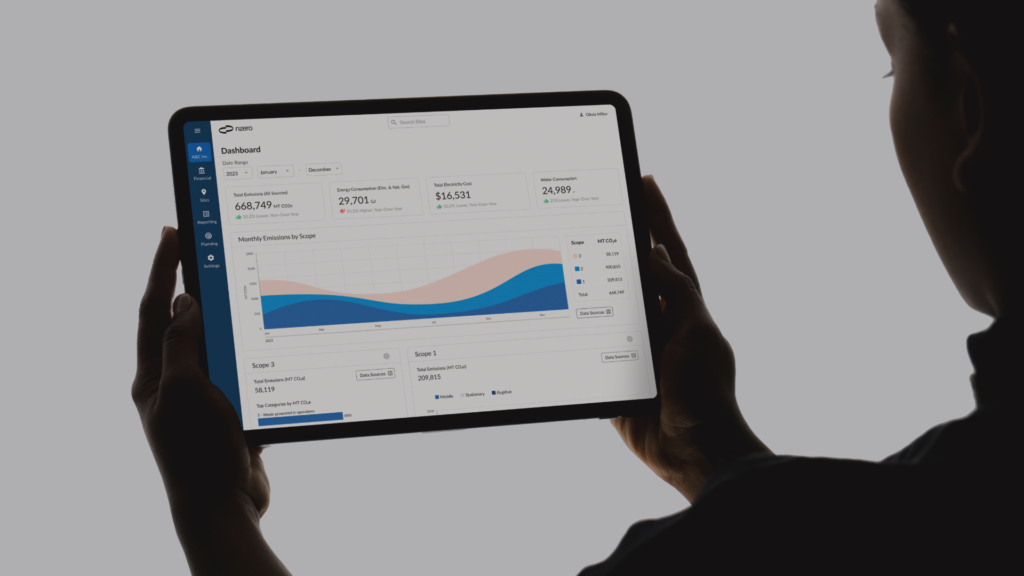State Clean Energy Targets Are Reshaping Corporate Energy Strategy
- Topics :
- Reporting Scope 1 Scope 2
Preparing for SB 253 and SB 261: Energy-intensive firms’ playbook
Published September 29, 2025

California’s SB 253 and SB 261 are reshaping corporate disclosure. With the California Air Resources Board (CARB) publishing a preliminary list of covered entities in September 2025, large companies now face a clear mandate to measure, verify, and disclose both their greenhouse gas emissions and their climate-related financial risks. For energy-intensive firms, compliance requires a disciplined data and risk strategy but also offers the chance to strengthen competitiveness.
What are SB 253 and SB 261 & who they apply to
SB 253, known as the Climate Corporate Data Accountability Act, requires annual Scope 1, 2, and 3 emissions disclosure for U.S. companies with more than one billion dollars in revenue that conduct business in California. SB 261, called the Climate-Related Financial Risk Act, requires biennial climate-related financial risk reports for companies with more than five hundred million dollars in revenue. Both laws are administered by CARB, with first compliance dates beginning in 2026. These rules align with global frameworks such as the SEC’s proposed climate disclosure rules, the EU’s Corporate Sustainability Reporting Directive (CSRD), and the recommendations of the Task Force on Climate-Related Financial Disclosures (TCFD).
These laws represent a new era of accountability where corporations must demonstrate not only accurate emissions accounting but also the resilience of their business strategies in a climate-impacted economy. They are part of California’s broader ambition to remain at the forefront of climate policy and set a precedent for national and global standards.

Why energy-intensive firms are in the crosshairs
Energy-intensive industries are under particular scrutiny because of their high direct emissions and reliance on carbon-heavy processes. Sectors such as steel, cement, chemicals, pulp and paper, food processing, cold storage, and data centers carry significant Scope 1 emissions from combustion and process activities, as well as Scope 2 emissions from purchased electricity. Their operations often represent a large share of California’s industrial footprint, making them visible targets for both regulators and stakeholders.
In addition, these industries face heightened exposure to climate-related financial risks. Transition risks, such as the introduction of carbon pricing or shifts in market preferences toward low-carbon products, can directly impact competitiveness. Physical risks, such as extreme weather events, heatwaves, wildfires, or flooding, can disrupt supply chains and production schedules. Investors and customers increasingly demand transparency, making these companies central players in the early enforcement of SB 253 and SB 261.
Building the emissions pipeline under SB 253
Compliance with SB 253 begins with building a robust emissions pipeline. Companies must define the boundaries of Scope 1, Scope 2, and Scope 3 in line with the Greenhouse Gas Protocol, the globally recognized standard. For Scope 1, firms must measure on-site combustion and process emissions, including fugitive gases. Scope 2 requires accurate accounting of purchased electricity, steam, and chilled water, often necessitating collaboration with utilities. Scope 3 is the most complex, involving upstream suppliers and downstream use of products. For industries with global supply chains, this step demands significant data coordination and supplier engagement.
Measurement methods include installing sub-meters, deploying IoT sensors, and integrating utility data feeds. A centralized data architecture ensures consistent reporting across multiple facilities and subsidiaries. Integrating emissions tracking with enterprise resource planning (ERP) and energy management systems helps automate data aggregation and reduce errors.
CARB requires companies to disclose emissions annually, with third-party assurance. This puts pressure on firms to establish datasets that can withstand rigorous review. By preparing early, companies can avoid costly last-minute fixes and demonstrate credibility to stakeholders.

Climate-related financial risk reporting under SB 261
SB 261 requires companies to publish biennial reports on their climate-related financial risks. These reports must address both transition risks and physical risks and are expected to follow the TCFD framework. That means reporting on governance structures, corporate strategy, risk management processes, and the metrics used to evaluate resilience.
For heavy industries, this reporting translates into tangible financial scenarios. Cement and steel manufacturers must account for the rising cost of carbon-intensive operations and the risk of losing market share to low-carbon alternatives. Food processing companies must evaluate exposure to water scarcity, volatile agricultural inputs, and disrupted supply chains. Cold storage facilities, which depend on stable electricity and cooling, must consider the reliability of the grid during extreme heat events and the financial consequences of outages.
By connecting emissions data under SB 253 with financial risk reporting under SB 261, firms can build a more integrated view of climate exposure. This integration not only strengthens reporting credibility but also provides actionable insights for corporate strategy.
Assurance, reporting, and CARB’s preliminary list
SB 253 includes a phased requirement for third-party assurance, beginning with limited assurance and escalating to reasonable assurance. This approach mirrors international standards such as ISO 14064, ensuring comparability and rigor. SB 261 mandates public disclosure of climate risk reports, which means companies must prepare for investor and civil society scrutiny.
In September 2025, CARB released a preliminary list of reporting and covered entities. This list offers an initial view of companies likely subject to SB 253 and SB 261. However, CARB emphasizes that the list is not exhaustive. Companies not named must still assess their obligations, as the laws apply based on revenue and California business activity. Stakeholders are invited to provide feedback, and CARB will refine the list over time.
The compliance timeline is critical. Draft CARB regulations are expected in 2025. The first SB 261 climate risk reports are due January 1, 2026. SB 253 reporting will be phased in after 2026, with increasing assurance requirements. Companies that delay preparation risk financial penalties, reputational harm, and investor distrust.
Turning compliance into competitive advantage
While compliance carries costs, it can also generate significant value. Accurate disclosure improves ESG ratings and strengthens access to sustainable finance, including green bonds and ESG-linked loans. Robust carbon accounting can reveal opportunities for cost savings through energy efficiency and process optimization.
Companies that excel in compliance can differentiate themselves in procurement markets where customers demand low-carbon suppliers. Investors are more likely to trust firms that provide transparent and verified climate data. By embedding climate disclosure into corporate strategy, firms can move beyond risk management and use compliance as a platform for long-term competitiveness.
The future of corporate accountability will reward firms that approach disclosure not as a regulatory burden but as a driver of innovation and resilience. For energy-intensive companies, SB 253 and SB 261 are both a challenge and an opportunity to lead in a carbon-constrained economy.
References
- California Air Resources Board – Corporate GHG Reporting FAQs and Fact Sheet
- California Air Resources Board – Climate Related Financial Risk Disclosures: Draft Checklist









